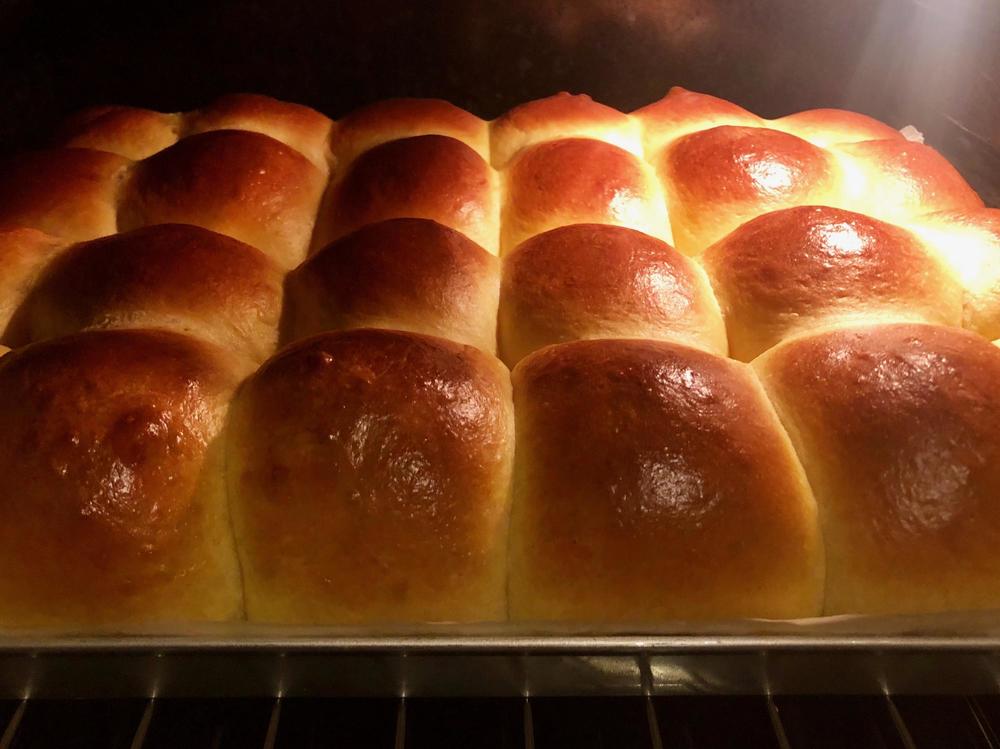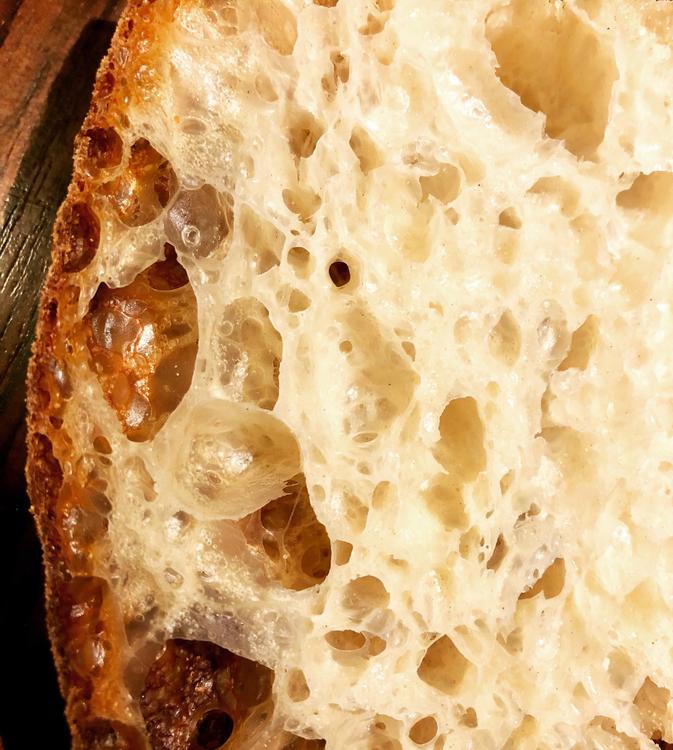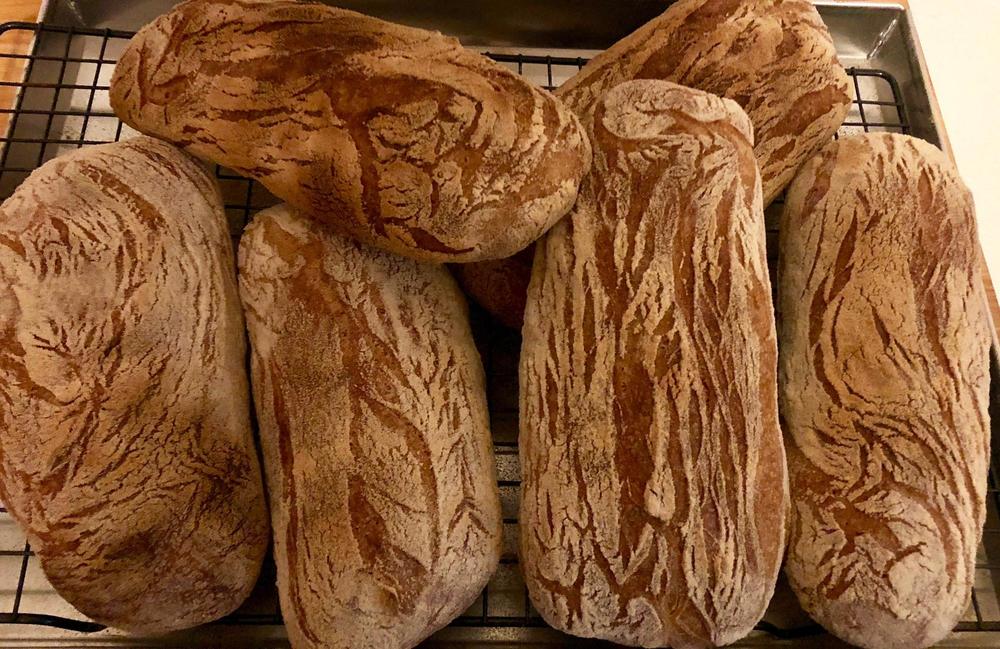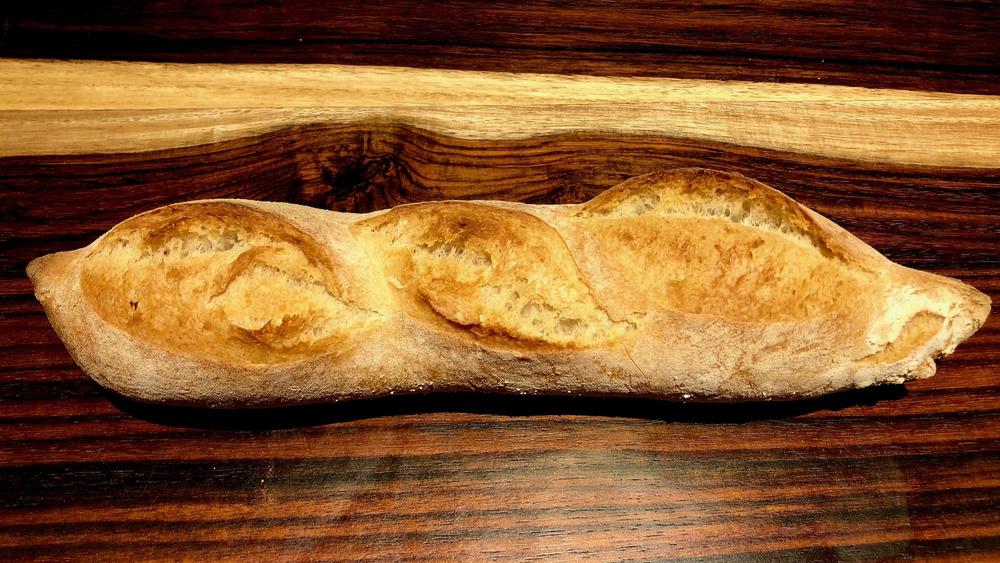-
Posts
5 -
Joined
-
Last visited
Contact Methods
-
Website URL
http://keating.io
Profile Information
-
Location
Bologna, Italy
Recent Profile Visitors
The recent visitors block is disabled and is not being shown to other users.
-

Baking with Myhrvold's "Modernist Bread: The Art and Science"
kevinkeating replied to a topic in Pastry & Baking
In most cases, shaped dough is placed into bannetons with the seam side UP, whether proofed cold or warm, and then fully inverted and scored (on the non-seam side) when moved to the oven (this is true using the combo cooker method as well in professional deck ovens). If you have a particularly slack dough such as a ciabatta (this isn't a great example as they aren't proofed in baskets, but the point stands), you can proof seam side down in a banneton and invert before moving to the oven without slashing. In this case, the seam serves the same function as slashes (which can't typically be easily made on super-slack doughs). Another benefit of proofing a very wet/slack dough seam side down is that the tension of the unbroken top skin allows the dough itself to develop more strength while proofing. You can test this some time by shaping two rolls and placing them both on a linen sheet (couche) covered, to proof, one seam side up and the other down. After awhile, the roll with seam up will practically flatten (depending on other factors in the dough, of course), while the seam-down will have considerably more strength. Dough is typically never "slid" out of a banneton to keep the same side up, nor should it be flipped twice. Both of these methods can damage the loaf, ruin shaping, and in some unfortunate cases create thick folds of uncooked dough in the final bread. Finally, in some manifestations of the cast-iron cooking instructions (especially with no-knead recipes), they typically direct you to proof in a basket seam down, then invert into the heated cast iron pot without scoring, because the deep sides of the hot pot making scoring difficult (and the no-knead loaves typically also aren't very "strong"). The combo cooker method obviates this by having you invert the dough onto the "skillet/cover" part of the cooker, which is not deep and so presents less danger of burns. Hope this is clear. Reality is that in the bread world there's little set in stone - and master bakers take the approach of thinking about the desired characteristics in the final bread and then work backward to create a process for the mixing, fermentation, shaping, proofing, scoring, and baking that has the desired outcome. Want a more rustic look, for example? Proof seam down and invert so the seam is up and breaks on its own (or skip the banneton altogether, don't overwork the shaping and use a couche to proof). Prefer decorative cuts? Proof seam up in a banneton with a cloth (to avoid ridges), invert, brush off excess flour, then dust evenly with fresh flour, score and bake. -

Baking with Myhrvold's "Modernist Bread: The Art and Science"
kevinkeating replied to a topic in Pastry & Baking
Made the master brioche (50% butter) recipe yesterday, left the dough in the fridge until this morning, took it out, shaped and baked (made a double recipe so I did a tray of rolls and also a pan loaf). Marvelous, decadent bread. (Brushed the tops of the rolls with a confectioners sugar/egg white glaze for some added sweetness - breakfast of champions, really). -

Baking with Myhrvold's "Modernist Bread: The Art and Science"
kevinkeating replied to a topic in Pastry & Baking
Yesterday got around to trying the direct ciabatta recipe (using my new Ankarsrum mixer). The fermentation moved pretty fast, but fortunately I was around to manage it, and I'm pretty happy with the result. It was a really slack dough at 88% hydration (here in Italy the standard ciabatta uses only 80% hydration - my guess is that it's due to the differences in flours...next time I'll probably stay closer to that level) but handled well enough with a generous dusting of semola rimacinata. Final proof on a couche and baked uncovered on the back of a baking sheet with a tray of boiling water on the floor of the oven for the first 20 minutes of so. The crumb was quite open, creamy and translucent and very tender. -

Baking with Myhrvold's "Modernist Bread: The Art and Science"
kevinkeating replied to a topic in Pastry & Baking
Thanks so much! (Big fan of the pointy ends, too...gives a nice dark toasty crunch to whoever's lucky enough to grab "le quignon") -

Baking with Myhrvold's "Modernist Bread: The Art and Science"
kevinkeating replied to a topic in Pastry & Baking
Hi all, new to this forum, but wanted to share my success with the MB baguette last week (French Lean, direct method because I was short on bread and time). It's the first full recipe I've made from the book, though I've been using it as a resource for the other bread I bake ever since I got it. Made three short baguettes (150g each) in my little IKEA apartment oven, with a tray on the bottom for steam. No crumb shot, but it was soft and fairly open (mixed by hand). I'm in Italy, so my flour isn't exactly comparable to the American stuff, which is always a fun challenge when using any recipes from the US, but I used a mix of stone-ground type 0 flours (which refers to the level of sifting - with 00 being finest/most white, then 0, 1, 2, then whole wheat or "integrale") with different protein contents (one high, one lower) and proofed on a linen couche, seam up, then transferred to an upside down preheated baking sheet.







